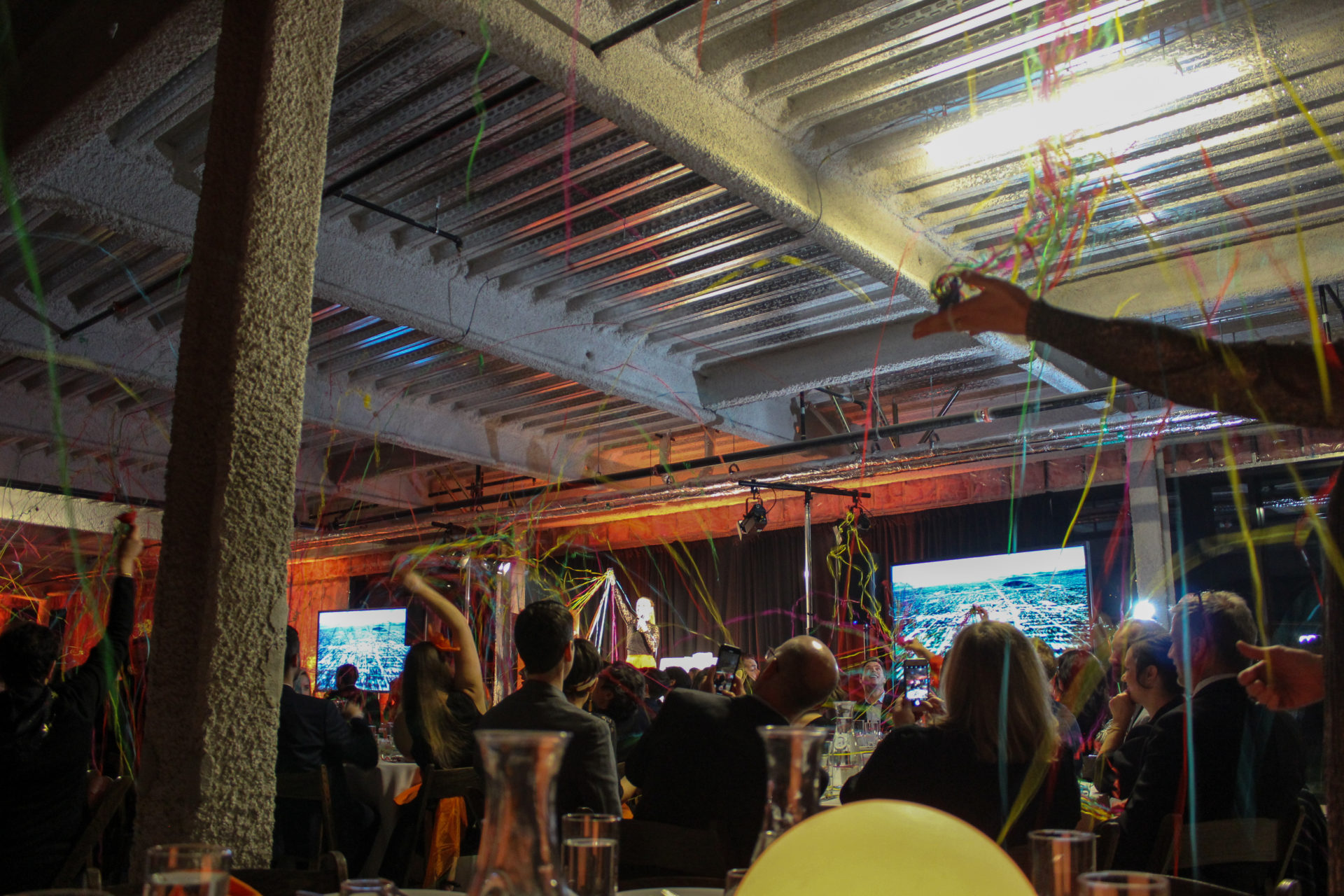
I have trouble with elevator lights. Most cannot stand the music, but for me, it is the uninviting fluorescence that floods the space of any elevator I am unfortunate enough to inhabit. However, after attending Design Museum Portland’s sixth annual gala on Oct. 19, I have spent less time blindlessly hating these lights and more time considering alternatives. What if the lights were colored? What if they alternated between blue and green depending on if the elevator was moving up or down? What if every elevator contained a skylight?
The event itself served as a fundraiser intended to develop and increase Design Museum’s operations within the city. The title ‘museum’ can be a little misleading if one is unfamiliar with the function of this organization. Design Museum lacks a singular location. Instead, it interacts with the Portland community by going directly to different venue spaces, including both public and private environments, to establish exhibits and events. Within these spaces, Design Museum hosts lectures, workshops and mixers that emphasize inspiring creativity, educating members and the general public on the importance of design and connecting similarly interested individuals with one another.
One of the main tenets of the organization centers around disrupting the convention that design is a particularly narrow or exclusive field. Design Museum would argue instead that design and creativity affect every aspect of our experience. As such, they often seek to include members of the community that do not have a design background in order to diversify the conversation. They believe that anyone, regardless of their artistic or technical experience, can provide input.
The gala itself took place on one of the upper floors of a building on the North Waterfront and offered stunning views of downtown Portland. The theme of the event focused on reacquainting oneself with the five senses. Appetizers and drinks were served to allow attendees to indulge in the sensation of taste while cocktail tables offered spherical paper cutouts that guests could assemble at their leisure to stimulate the sensation of touch. One station even asked guests to list some of their favorite scents when roaming the streets of Portland. Despite my status as one of the youngest people in attendance, Design Museum successfully curated an inviting atmosphere that dissuaded any sort of social awkwardness, promoting a space that instead encouraged discussion and shameless enjoyment.
After an hour or two of mingling, I received a text notification that it was time for everyone to find a seat at their appropriate table. The highlight of the night was the dinner, which was accompanied by speakers from employees of various corporations. During the host’s opening remarks, he invited all of the guests to examine the chocolate that had been placed under their napkins. He discouraged eating it immediately and instead asked that each guest first break the chocolate in half, sniff it vigorously and admire its texture before consuming it. In this way, a certain intentionality and an awareness of one’s bodily sensations were emphasized throughout the dinner. Halfway through the meal, Global Director of Advertising at Nike Desmond Marzette gave a keynote presentation on the origins of hip hop music in New York.. He posited that these early music pioneers were in fact accomplished designers. The way that these musicians adapted to financial constraints and logistical issues among other problems highlighted the fundamental concepts behind any good designer: expression, innovation and experimentation. Supplementing the insightful commentary provided by the speakers, each dish was prepared individually by local Portland chefs.
Towards the end of the meal, Managing Director of Design Museum Portland Erica Rife asked for financial donations from the audience to ensure the future success of the organization. While many did not opt for the most costly donations, a surprising amount of people were still willing to donate something, which is itself an accomplishment. Desert was served in the adjacent room where a deaf DJ was preparing for his upcoming set. A vertical light display had been installed in the far corner of the room and was intended to mimic the sensation of music for deaf people; certain colored lights would flash as different sounds played. For those of us fortunate enough to possess the ability to hear, the lights that accompanied the music served as a stimulating supplement, forcing us to consider the limitations and capabilities of our senses.
I left the event not long after. I came as a skeptic, unsure of just how successfully a nomadic organization could operate without an established location or an entirely lucid purpose. I left a believer, musing on the way that the elevator lights flickered on the way to the ground level.
Subscribe to the Mossy Log Newsletter
Stay up to date with the goings-on at Lewis & Clark! Get the top stories or your favorite section delivered to your inbox whenever we release a new issue.

Leave a Reply